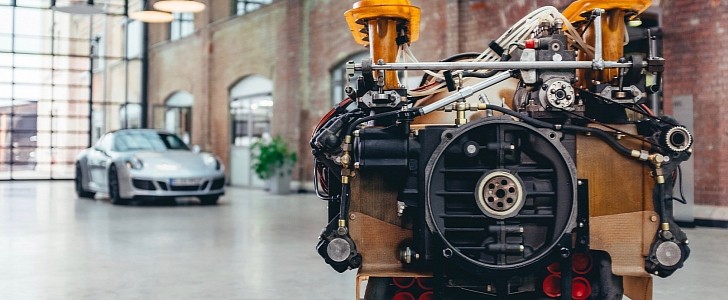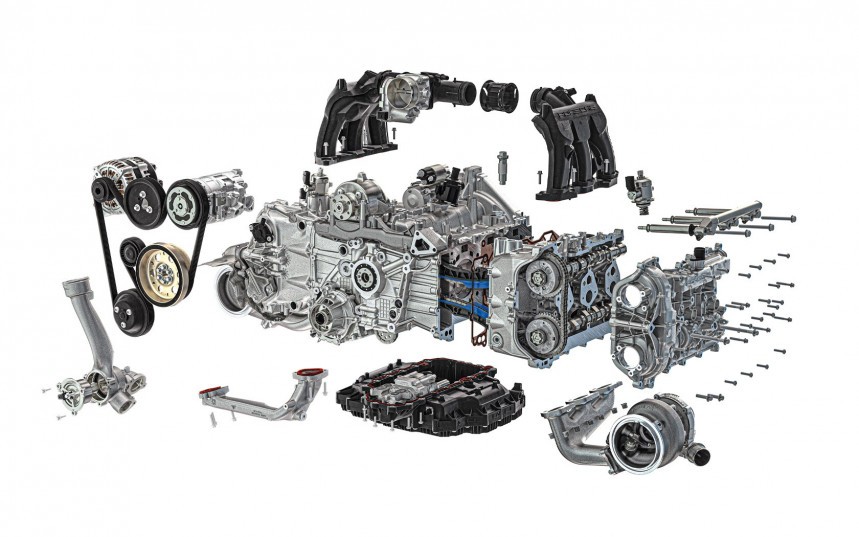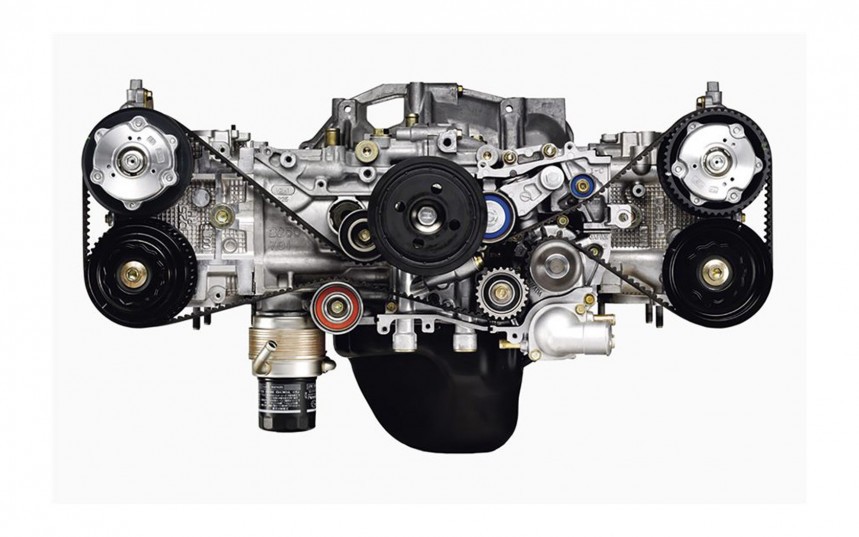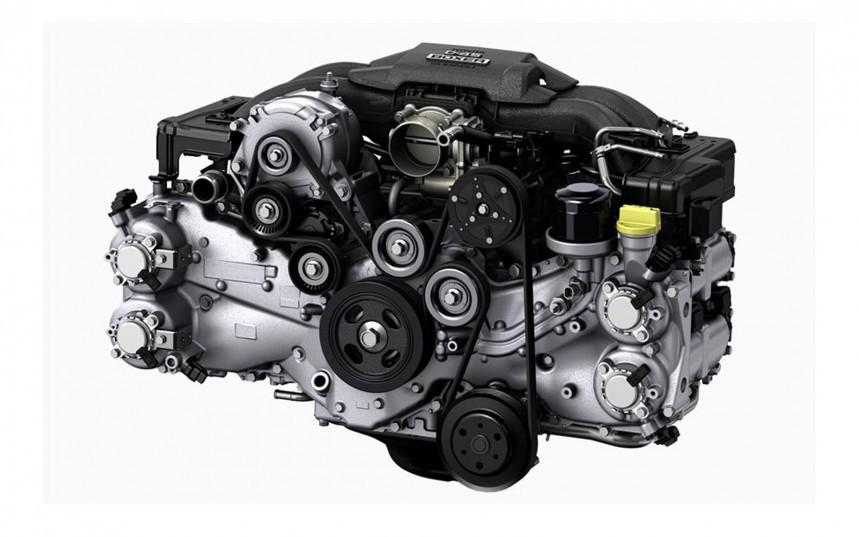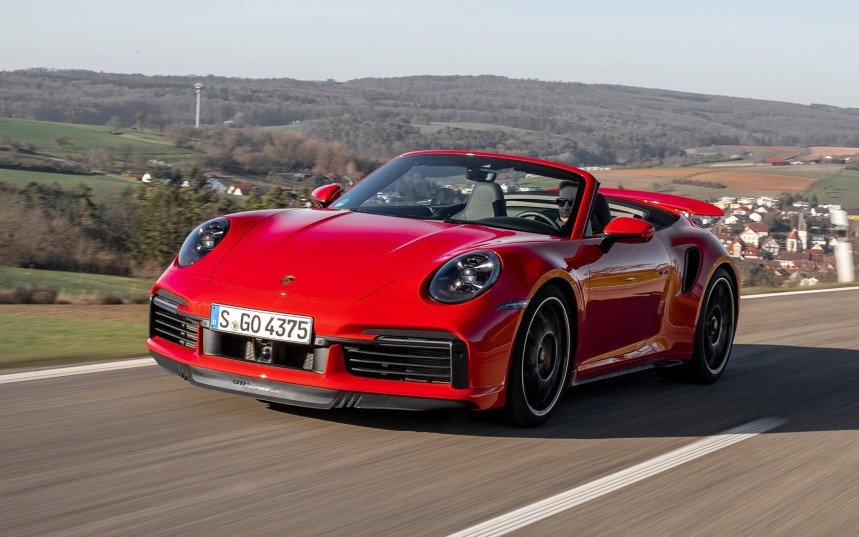For more than 100 years, boxer engines have been used to power various vehicles. Among the manufacturers who still employ this design are Porsche and Subaru, with both companies continuing to perfect it even in the era of electric vehicles.
The term ‘boxer’ is derived from the movement of the pistons, which resemble the motion of a boxer's fists in the horizontal plane.
This engine was born in Germany, but contrary to popular belief, it was not Porsche’s creation. In fact, it was invented by Karl Benz in 1887, more than fifty years before the first 356 took to the streets.
Called the ‘contra’ engine, it used two horizontally opposed pistons that reached the top dead center simultaneously, counterbalancing each other.
Years later, Ferdinand Porsche used the design for the flat-four that powered the popular Volkswagen Beetle. It was used again on the first Porsche-branded car, the 356, and became the essence of Porsche engineering excellence to this day.
The design was utilized by many manufactures throughout the years, including Subaru, which introduced the first EA boxer engine in 1966 and remains committed to using it to this day on most of its vehicles.
But why are these two manufacturers the only ones to use it on modern cars? To answer this question, we must look at the advantages and disadvantages of the boxer.
The primary advantage and the main reason for its popularity is improved dynamics. Due to their construction, flat engines have a lower center of gravity, which translates to the entire vehicle, resulting in greater stability, particularly when cornering.
This layout also produces a smoother running engine as the natural counter punch movement of the piston reduces vibration. This eliminates the need for additional components and increases the durability of the unit.
Another important advantage is improved thermal efficiency. Due to its construction, coolant flow is better, and heat is dispersed more effectively.
Safety is also key, and considering that the flat engines are mounted in a low position, they will likely be pushed under the passenger compartment in the event of a collision.
On the other hand, there are several disadvantages, the main one being the size. Boxers are traditionally wider than conventional inline or V configuration engines, in theory limiting their usage to wider chassis.
Furthermore, these powerplants are a bit more complex and thus more expensive to develop than more popular layouts, and fitting them to FWD vehicles is troublesome.
Servicing flat engines is also more difficult because of the limited accessibility of several components, and they inherently have issues with oil leaks.
However, Porsche and Subaru have found a way to maximize the advantages while working around the disadvantages, creating compact boxers that are powerful, efficient, and durable enough to cope with modern-day requirements.
The German manufacturer has perfected the design, which became synonymous with the brand throughout its history. Whether naturally aspirated or turbocharged, Zuffenhausen's boxer engines deliver plenty of power and supreme stability, making Porsches some of the most popular sports cars out there.
Subaru has also improved the design so much that it became cheaper to improve than developing a completely new engine with a more conventional layout. The carmaker also states that it managed to improve efficiency to the point where it gets better mileage than some inline fours.
Despite this, the boxer – along with all internal combustion engines – is approaching the end of the line at an accelerated pace.
Porsche has become one of the leading innovators in electric powertrain development, planning to abandon ICEs completely in the not-so-distant future, while the Japanese manufacturer is also slowly switching to all-electric mobility, preparing to showcase their first EV this year.
This engine was born in Germany, but contrary to popular belief, it was not Porsche’s creation. In fact, it was invented by Karl Benz in 1887, more than fifty years before the first 356 took to the streets.
Called the ‘contra’ engine, it used two horizontally opposed pistons that reached the top dead center simultaneously, counterbalancing each other.
Years later, Ferdinand Porsche used the design for the flat-four that powered the popular Volkswagen Beetle. It was used again on the first Porsche-branded car, the 356, and became the essence of Porsche engineering excellence to this day.
But why are these two manufacturers the only ones to use it on modern cars? To answer this question, we must look at the advantages and disadvantages of the boxer.
The primary advantage and the main reason for its popularity is improved dynamics. Due to their construction, flat engines have a lower center of gravity, which translates to the entire vehicle, resulting in greater stability, particularly when cornering.
Another important advantage is improved thermal efficiency. Due to its construction, coolant flow is better, and heat is dispersed more effectively.
Safety is also key, and considering that the flat engines are mounted in a low position, they will likely be pushed under the passenger compartment in the event of a collision.
On the other hand, there are several disadvantages, the main one being the size. Boxers are traditionally wider than conventional inline or V configuration engines, in theory limiting their usage to wider chassis.
Servicing flat engines is also more difficult because of the limited accessibility of several components, and they inherently have issues with oil leaks.
However, Porsche and Subaru have found a way to maximize the advantages while working around the disadvantages, creating compact boxers that are powerful, efficient, and durable enough to cope with modern-day requirements.
Subaru has also improved the design so much that it became cheaper to improve than developing a completely new engine with a more conventional layout. The carmaker also states that it managed to improve efficiency to the point where it gets better mileage than some inline fours.
Despite this, the boxer – along with all internal combustion engines – is approaching the end of the line at an accelerated pace.
Porsche has become one of the leading innovators in electric powertrain development, planning to abandon ICEs completely in the not-so-distant future, while the Japanese manufacturer is also slowly switching to all-electric mobility, preparing to showcase their first EV this year.
